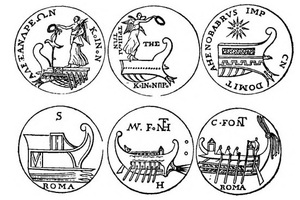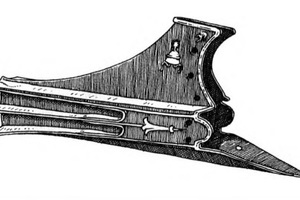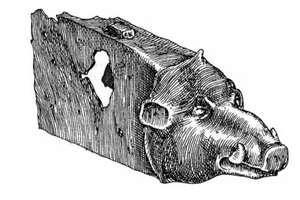Rostrum
A rostrum (Latin: rostrum) is a ram used on warships of the ancient Roman fleet. The ramming strike to the side of an enemy ship was the primary combat maneuver in naval battles. Positioned below the waterline, the ram allowed for the rapid sinking of ships. The rostrum also served as a war trophy. Over time, the term "rostrum" came to refer to the prow figure on a ship, but the tradition of displaying the rostra of defeated ships remained.
Rostrum on Roman Coins The rostrum was primarily made of bronze. The most common form was a trident. However, sometimes rams in the shape of a boar's head were also found. The best-preserved ancient rostrum is housed in the museum in Haifa, Israel.
Examples and Preservation Rostrum in Haifa Museum: The Haifa museum in Israel houses one of the best-preserved ancient rostra. This artifact provides invaluable insight into the construction and design of Roman naval weaponry.
Boar's Head Ram: Found in the harbor of Genoa, Italy, this ram is shaped like a boar's head and is now located in the Royal Armory (Armeria Reale) in Turin, Italy. This unique design highlights the variety and symbolic significance of naval rams in ancient Rome.
Significance and Influence The rostrum was more than just a functional weapon; it was a symbol of naval prowess and victory. Displayed as trophies, these artifacts showcased the might of the Roman fleet and the success of their military campaigns. The tradition of showcasing rostra influenced later naval and civic architecture, as seen in the rostral columns that celebrate naval victories.





